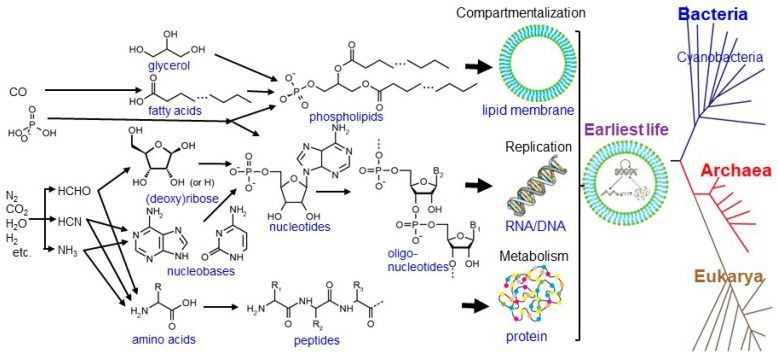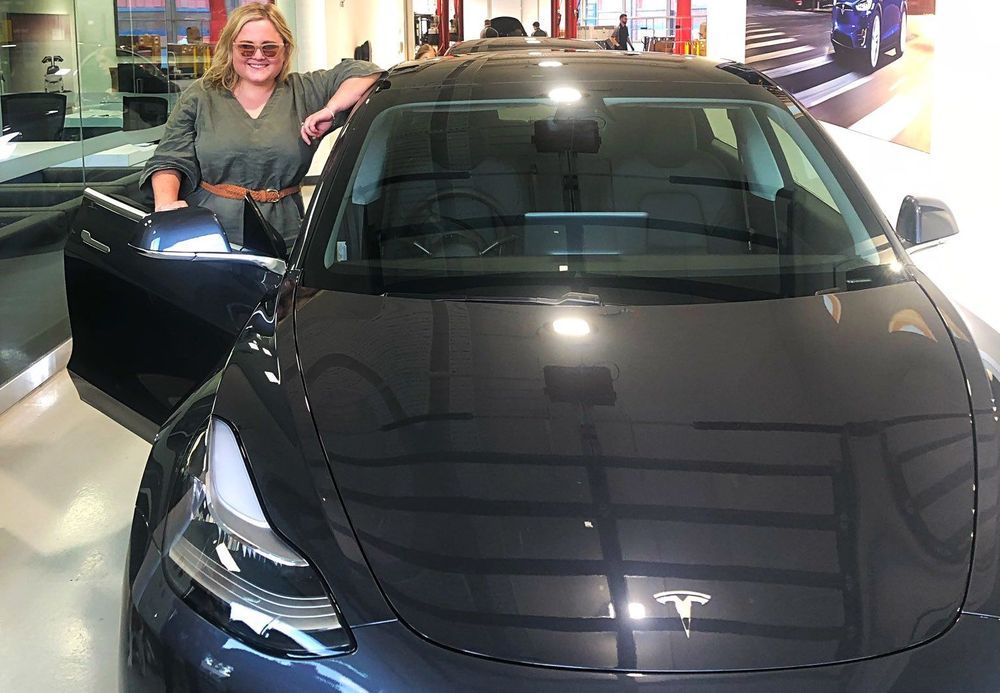The Beresheet lunar lander carried thousands of books, DNA samples, and a few thousand water bears to the moon. But did any of it survive the crash?



Crews working on the largest U.S. experiment designed to directly detect dark matter completed a major milestone last month, and are now turning their sights toward startup after experiencing some delays due to global pandemic precautions.
U.S. Department of Energy officials on Sept. 21 formally signed off on project completion for LUX-ZEPLIN, or LZ: an ultrasensitive experiment that will use 10 metric tons of liquid xenon to hunt for signals of interactions with theorized dark matter particles called WIMPs, or weakly interacting massive particles. DOE’s project completion milestone is called Critical Decision 4, or CD-4.
Dark matter makes up an estimated 85 percent of all matter in the universe. We know it’s there because of its observed gravitational effects on normal matter, but we don’t yet know what it is. LZ is designed to detect the two flashes of light that occur if a WIMP interacts with the nucleus of a xenon atom.

« Today we announced the first in a series of upcoming commitments from our international partners to support our Artemis plans. NASA and the European Space Agency (ESA) have signed an agreement committing our space agencies to building the Gateway together. As our outpost in lunar orbit, the Gateway is critical for sustainable exploration of the Moon as well as testing systems and operations for future missions to Mars.
With this Memorandum of Understanding, ESA will provide an additional habitation element, enhanced lunar communications, and a refueling capability to the Gateway later this decade. They will also provide two more European service modules for future Orion spacecraft.
We are honored by this agreement with ESA and, again, it is one of several to come with our international partners. Exploration requires more than hardware though – and that is why this commitment with ESA includes opportunities for European astronauts to fly with NASA astronauts on future Artemis missions to the Gateway. »

Scientists today are quick to point out that they are still basing their models on life as we know it: Carbon-based and reliant on organic compounds and water…
In 2001, the first author (S.N.) led the publication of a book entitled “Geochemistry and the origin of life” in collaboration with Dr. Andre Brack aiming to figure out geo- and astro-chemical processes essential for the emergence of life. Since then, a great number of research progress has been achieved in the relevant topics from our group and others, ranging from the extraterrestrial inputs of life’s building blocks, the chemical evolution on Earth with the aid of mineral catalysts, to the fossilized records of ancient microorganisms. Here, in addition to summarizing these findings for the origin and early evolution of life, we propose a new hypothesis for the generation and co-evolution of photosynthesis with the redox and photochemical conditions on the Earth’s surface. Besides these bottom-up approaches, we introduce an experimental study on the role of water molecules in the life’s function, focusing on the transition from live, dormant, and dead states through dehydration/hydration. Further spectroscopic studies on the hydrogen bonding behaviors of water molecules in living cells will provide important clues to solve the complex nature of life.
Keywords: building blocks, biopolymers, polymerization, extraterrestrial inputs, mineral surfaces, metabolism, photosynthesis, water, hydrogen bonding (9: 3–10)
Life is generally characterized by the following three functions [1]: metabolism: the ability to capture energy and material resources, staying away from thermodynamic equilibrium, replication: the ability to process and transmit heritable information to progeny, and compartmentalization: the ability to keep its components together and distinguish itself from the environment. These functions are operated by biopolymers such as proteins, DNAs, RNAs, and phospholipids ( Figure 1 ). Proteins are made of amino acids linked together by peptide bonds. DNAs and RNAs are made of nucleotides (composed of (deoxy)ribose and nucleobases) bound by phosphodiester linkages. Phospholipids are made of two fatty acids esterified to a glycerol phosphate molecule.
Bioo uses microorganisms in the soil to power lights—and maybe one day, your whole house.
This is probably the only time, that I’ll be sharing a netflix trailer in this group. The documentary is worth watching, especially the outlook at the end.
In this unique feature documentary, titled David Attenborough: A Life On Our Planet, the celebrated naturalist reflects upon both the defining moments of his lifetime and the devastating changes he has seen. Coming to Netflix October 4 2020, the film addresses some of the biggest challenges facing life on our planet, providing a snapshot of global nature loss in a single lifetime. With it comes a powerful message of hope for future generations as Attenborough reveals the solutions to help save our planet from disaster.
SUBSCRIBE: http://bit.ly/29qBUt7
About Netflix:
Netflix is the world’s leading streaming entertainment service with 193 million paid memberships in over 190 countries enjoying TV series, documentaries and feature films across a wide variety of genres and languages. Members can watch as much as they want, anytime, anywhere, on any internet-connected screen. Members can play, pause and resume watching, all without commercials or commitments.
David Attenborough: A Life on Our Planet | Official Trailer | Netflix

SpaceX is expanding the beta test of its Starlink satellite internet service, reaching out via email on Monday to people who expressed interest in signing up for the service.
Called the “Better Than Nothing Beta” test, according to multiple screenshots of the email seen by CNBC, initial Starlink service is priced at $99 a month – plus a $499 upfront cost to order the Starlink Kit. That kit includes a user terminal to connect to the satellites, a mounting tripod and a wifi router. There is also now a Starlink app listed by SpaceX on the Google Play and Apple iOS app stores.
“As you can tell from the title, we are trying to lower your initial expectations,” the emails said, signed Starlink Team. “Expect to see data speeds vary from 50Mb/s to 150Mb/s and latency from 20ms to 40ms over the next several months as we enhance the Starlink system. There will also be brief periods of no connectivity at all.”

Deci, a Tel Aviv-based startup that is building a new platform that uses AI to optimized AI models and get them ready for production, today announced that it has raised a $9.1 million seed round led by Emerge and Square Peg.
The general idea here is to make it easier and faster for businesses to take AI workloads into production — and to optimize those production models for improved accuracy and performance. To enable this, the company built an end-to-end solution that allows engineers to bring in their pre-trained models and then have Deci manage, benchmark and optimize them before they package them up for deployment. Using its runtime container or Edge SDK, Deci users can also then serve those models on virtually any modern platform and cloud.

Australian radio host Annabelle Brett, who works at Mix 1–6.3 Canberra, cleverly used her Tesla mobile app to mess with the two would-be thieves who attempted to steal her Model 3.
The theft attempt started when the radio host received notifications on her phone early one morning stating that her Model 3’s alarm was triggered. After receiving the notifications, Brett went to her locked garage where she had parked her Model 3 and discovered it was missing.
Unfortunately for the would-be thieves, Brett’s Model 3 is equipped with safety features like Sentry Mode, which continuously monitors a Tesla’s surroundings when it is left unattended. Through these features, footage from the car’s suite of cameras could be retrieved.

Tuomas Sandholm, a computer scientist at Carnegie Mellon University, is not a poker player—or much of a poker fan, in fact—but he is fascinated by the game for much the same reason as the great game theorist John von Neumann before him. Von Neumann, who died in 1957, viewed poker as the perfect model for human decision making, for finding the balance between skill and chance that accompanies our every choice. He saw poker as the ultimate strategic challenge, combining as it does not just the mathematical elements of a game like chess but the uniquely human, psychological angles that are more difficult to model precisely—a view shared years later by Sandholm in his research with artificial intelligence.
“Poker is the main benchmark and challenge program for games of imperfect information,” Sandholm told me on a warm spring afternoon in 2018, when we met in his offices in Pittsburgh. The game, it turns out, has become the gold standard for developing artificial intelligence.
Tall and thin, with wire-frame glasses and neat brow hair framing a friendly face, Sandholm is behind the creation of three computer programs designed to test their mettle against human poker players: Claudico, Libratus, and most recently, Pluribus. (When we met, Libratus was still a toddler and Pluribus didn’t yet exist.) The goal isn’t to solve poker, as such, but to create algorithms whose decision making prowess in poker’s world of imperfect information and stochastic situations—situations that are randomly determined and unable to be predicted—can then be applied to other stochastic realms, like the military, business, government, cybersecurity, even health care.